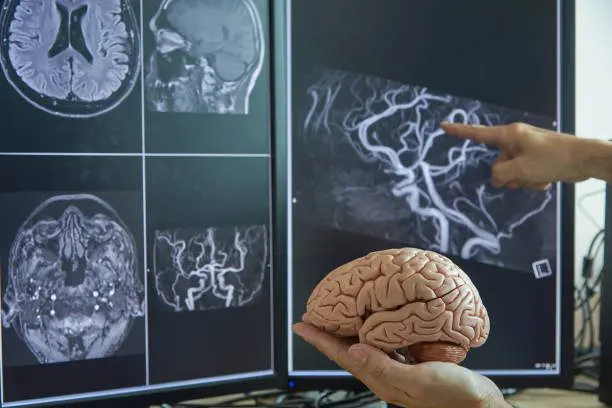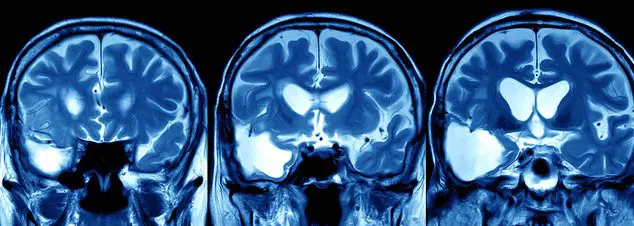TBI and The Most Common Type of TBI: Concussion
According to the Center for Disease Control, a traumatic brain injury is brain damage caused by a bump, blow, jolt, or other trauma to the head. Not all bumps to the head result in Traumatic Brain Injuries (TBI concussions); however, if you have injured your head and experienced any changes in your normal behavior, it is highly likely that you have experienced a traumatic brain injury.
Traumatic Brain Injuries are classified by type and severity. There are two main types of Traumatic Brain Injuries: Closed and Penetrating. Most Traumatic Brain Injuries are closed head injuries caused by a blunt force that does not break through the skull. Penetrating Traumatic Brain Injuries involve injuries that pierce through the skull and damage the brain directly, but these injuries are much less common. Traumatic Brain Injuries are also classified by symptom severity, ranging from mild to severe. Mild Traumatic Brain Injuries may include short-term changes in mental status or consciousness, while severe Traumatic Brain Injuries may include extended periods of unconsciousness or memory loss. The Glasgow Coma Scale is often used to assess whether a Traumatic Brain Injury is mild, moderate, or severe.


The Mayo Clinic also recommends using the following questions when assessing the severity of a Traumatic Brain Injury:
How did the injury occur?
Did the person lose consciousness?
How long was the person unconscious?
Were there any changes in alertness, speaking, or coordination following the head trauma?
Where was the head or other parts of the body struck?
How forceful was the injury? For example, what hit the person’s head, how far did they fall, or were they thrown from a vehicle?
Was the person’s body whipped around or severely jarred?
The answers to these questions, in combination with imaging tests and scores on the Glasgow Coma Scale, inform a doctor’s assessment as to whether the Traumatic Brain Injury is mild, moderate, or severe.
Concussions are the most common type of TBI. The medical field has defined concussion in a number of ways. A recent review of the concussion literature indicates that a concussion refers to changes in brain function that follow a force to the head, which may or may not be accompanied by a temporary loss of consciousness. Additionally, these symptoms must be diagnosed in awake individuals by measuring their neurologic and cognitive functioning (Carney et al., 2014). The CDC expands on this definition, explaining that concussions can be a result of either direct blows to the head or by situations where someone’s brain moves quickly back and forth (i.e., whiplash), such as during a fall or car accident.
Because concussions are typically not life-threatening, they are usually classified as “mild” forms of Traumatic Brain Injury. While not life-threatening, concussions can affect a person’s ability to think, engage in physical activity, manage emotions, and sleep.
4 Categories of Concussion Symptoms
After head injury, one can experience a range of difficulties. For some, symptoms last a short period. For others symptoms last weeks, months, years, and in some cases symptoms become a way of life.
The CDC identifies 4 Categories of Concussion Symptoms:
(1) thinking/remembering,
(2) physical deficits,
(3) changes in emotion/mood,
(4) sleep disturbances.
Cognitive Concussion Symptoms
When suffering a TBI or concussion, it is common for people to experience difficulties with their ability to think clearly. These symptoms include feeling foggy or slowed down, poor concentration or inability to focus, and difficulties remembering new information. Because of these difficulties, those who have suffered a Traumatic Brain Injury often have problems with reading that can impact their work and school performance.
Physical Concussion Symptoms
After a bump to the head, it is common for people to experience a headache, dizziness, blurry vision, nausea or vomiting, sensitivity to noise or lights, and balance problems immediately following their injury. Unfortunately, many of these symptoms can get worse over time, resulting in migraines, fatigue, and poor hand-eye coordination. This decrease in hand-eye coordination can be especially difficult for the injured athlete who wants to return to their pre-injury level of ability.
Emotional Concussion Symptoms
Most people do not realize that TBI and concussion can impact a person’s mental health. Often, people recovering from TBI experience extreme mood swings, depression, anxiety, or irritability and frustration that result in angry outbursts toward family, friends, or co-workers. These symptoms occur in people with and without a history of mental health problems. This means that people who have never experienced mental health problems prior to a concussion may have difficulties with mental health following their head injury.
Sleep-Related Concussion Symptoms
One of the biggest ways that TBI and concussion can disrupt a person’s life is through sleep-related symptoms. Some people experiencing a TBI or concussion may start sleeping too much, while others begin to sleep too little. Still, others experience restlessness or difficulty falling asleep. No matter which of these sleep-related concussion symptoms a person has, too much or too little sleep can keep a person from returning to their pre-injury work, school, and social routines.
Because these symptoms can be mild, people will sometimes underestimate the possibility that they may be dealing with a TBI or concussion. These people may experience a bump on the head and choose to “push through” symptoms, thinking they will feel better in time. Often, it may take several minutes, hours, or days for TBI or concussion symptoms to surface. Indeed, this delay in symptoms has been the driving force behind limiting same-day return-to-play for athletes experiencing blows to the head as a part of their sport.
If you have hit your head and experience any of the signs or symptoms listed above, contact us today for an examination and assessment.



